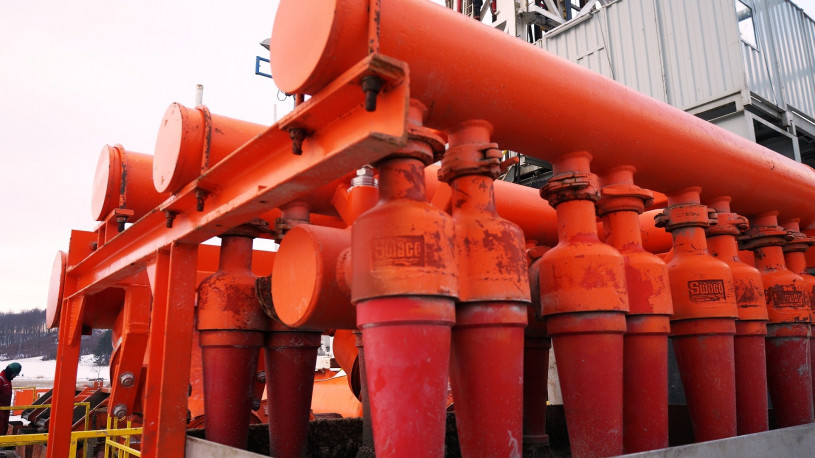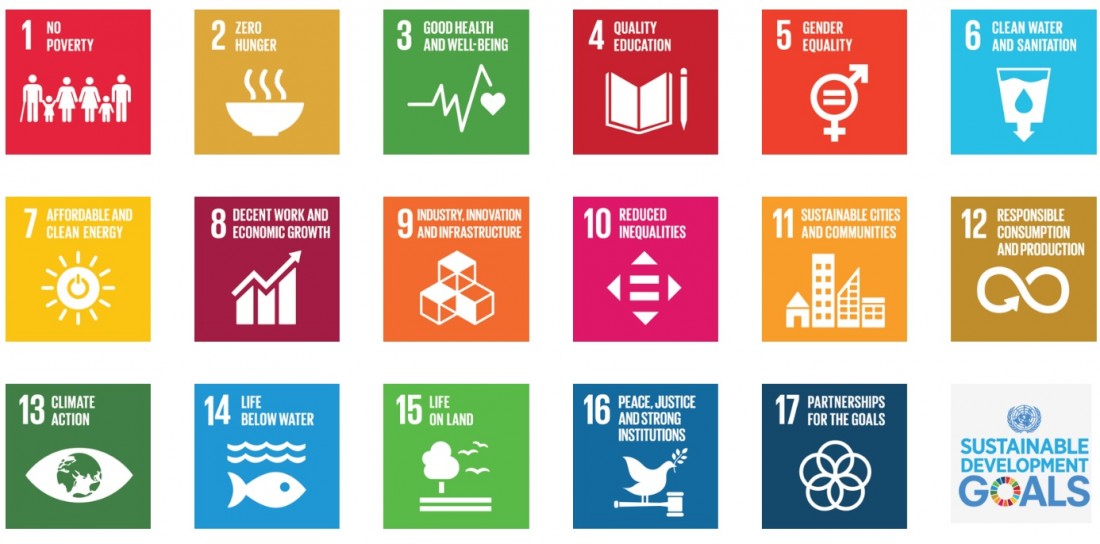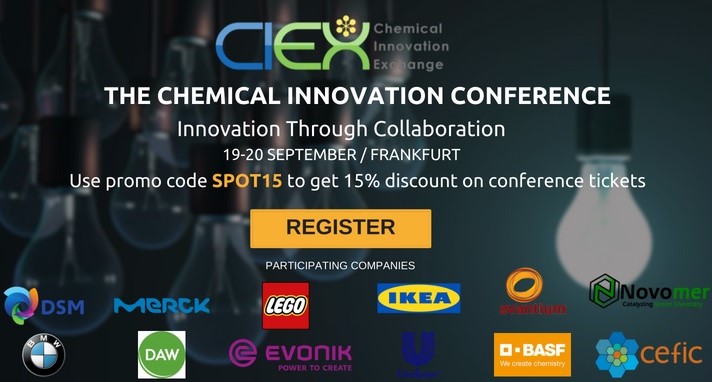-
The Chemical Industry’s 2018 Half Year Report
 Continue Reading
Continue ReadingThe handy website XmasClock.com tells us that we are over halfway through the year to Christmas. But before anyone starts panicking over what presents to buy, it is time to take stock on this year’s chemical industry progress. How has it performed over the last few months, and what does that tell us about the future for chemical production and supply?
How has the Chemicals Industry Been Performing?
While the chemical industry gave investors returns equal to other sectors from 2012 to 2016, the past two years have begun to show massive increase in return from investment. As chemical industry consultants as McKinsey noted in report from May 2018, stating, “Since mid-2016, chemical total return to shareholders performance has taken off again, posting a CAGR of 24 percent, compared with the world market’s 19 percent. The principal reasons have been a combination of a sharp increase in M&A activity across the chemical industry, which investors have generally supported, and a more favourable supply–demand position for petrochemical producers that has generated strong earnings growth.”
How is the Chemicals Industry Doing Now?
Most financial investors agree that the chemicals industry is in a strong position. As chemical industry experts at the investment consultancy Zacks noted in a recent report, “The chemical industry is riding an upturn in the world economy and continued strength across major end-use markets such as construction, automotive and electronics. Another positive for the industry is a recovery in demand in the energy space – a key chemical end-market that had been out of favour for a spell.” Adding that, “The recovery has also been driven by the rebound in crude oil prices from their historic lows.”
Beyond oil price fluctuations, other factors have also been in play to create the chemical industry’s strong position. These include:
The Return of the EU Chemical Sector
The European chemical industry has been in much better health following years of stagnation. This is largely due to improved economic growth in the Eurozone, which has brought with it increased consumer confidence and lower unemployment.
The recovery is evident in data from Cefic’s June 2018 report (pdf), which states that, “Production in the EU chemicals sector grew 1.9% from January to March 2018 compared to the same period of 2017. Producer prices were above the previous year’s level, growing 2.5% in the EU chemicals sector from January to March 2018 (y-o-y).” Additionally, “EU chemicals exports reached a value of €26.4 bn through February of the current year, rising by 1.5 bn (+5.8 per cent) compared to the first two months of 2017.”
Increased Chemical Industry Investment
In an industry famous for requiring high levels of investment the fact that large capital expenditure projects are going ahead shows signs of a healthy industry, especially in America. As Zacks notes, “The shale gas boom has incentivized a number of chemical companies including industry heavyweights such as BASF and LyondellBasell to invest billions of dollars to beef up capacity. According to the American Chemical Council (ACC), roughly 320 chemical projects have been already announced worth more than $185 billion, 62% of which is foreign direct investment.” Adding that, “The ACC expects chemical industry capital spending to rise 6.3% in 2018 and 6.8% in 2019 and eventually reach $48 billion by 2022.”
M&A’s Showing Value
The large number of mergers and acquisitions that have occurred over the past few years are also now bearing fruit. Cost-cutting measures such as plant closures and reduced staffing, as well as synergy opportunities and economies of scale are all aiding chemical industry growth.
US Chemical Industry Recovering
The US chemical industry had a difficult 2017, with hurricanes Harvey, Maria, and Irma causing an estimated $200 billion worth of damage. Harvey was particularly damaging, as it flooded Houston and much of its petrochemical base, although all 17 named storms of that year caused infrastructure damage, as well as affecting production, imports and exports.
With the Autumn 2017 hurricane season now passed, the industry has now generally recovered, and business is back to normal. The ACC is now predicting US chemical industry growth for 2019 of 3.9%.
You can read more about the Chemicals Industry’s Future on SPOTCHEMI‘s parent company AG CHEMI GROUP‘s blog page.
The Year Ahead for Chemicals
Chemical Industry Challenges
But despite the positive news of progress and expansion in the global chemical industry, there are still worries among chemical industry producers. For example, there is concern over a recent spike in raw material prices, with the supply chain from American suppliers having only just recovered from the hurricane season, whilst China’s ‘Blue Skies’ policy is also affecting basic chemical output.
There are also concerns over China’s general economic well-being, as recent years have seen a dip below the double-digit growth of the previous decade coupled with fears of a housing bubble.Zacks also acknowledges potential problems in agrichemical markets, noting that, “Chemical makers also continue to feel the pinch of depressed demand in agriculture markets. Sustained pressure on agricultural commodity prices is scuttling a meaningful recovery in this key chemical end-market. The outlook for the fertilizer and agricultural chemicals space remains cloudy due to continued weakness in crop prices, low farm income and sluggish economic conditions in certain emerging markets, including Latin America.”
Fears of a global trade war are also present, especially following June’s G7 summit.
The Chemical Industry’s Bright Future
Despite these bumps in the road ahead, the chemical industry has gone from strength to strength over the past two decades, even bouncing back strongly after the 2008 financial markets depression. As a result, the industry is likely to continue its upward trend in increasing output, value, and research levels.
Even in the short term with the threat of a trade war looming, predictions remain upbeat. As Zacks notes, “While the chemical industry still faces a few headwinds, its momentum is expected to continue this year on sustained demand strength across light vehicles and construction markets, a rebound in demand in the energy place and significant shale-linked capital investment. Strategic actions including expansion of scale through acquisitions, operational efficiency improvement and continued focus on cost and productivity should help chemical makers weather the macroeconomic and industry-specific headwinds in 2018.”
You can read more insights into the chemical industry and chemical industry markets at the SPOTCHEMI blog page.
Photo credit: TheManufacturer, Euractiv, AGCHEMIGROUP, Stiavelli, & Bilfinger
-
Sustainability in the Chemical Industry: Depressing or Inspiring?
 Continue Reading
Continue ReadingSustainability is a key trend in modern business, and yet it can produce feelings of depression.
This is for two main reasons.
- It conjures up images of our planet’s resources being exhausted and of industrial waste piling up, leaving a broken planet for our grandchildren.
- It sets out an enormous challenge and lots of hardwork for everyone to be more sustainable to avoid a catastrophic scenario (see reason 1).
Take for example, the UN Development Programme’s “call to action” of sustainable development goals. A quick look at the list shows that each goal is a massive problem…and there are seventeen of them. Of the seventeen, all are relevant for the chemical industry.
But sustainability goes further than politics and a list of high-minded concepts from elites in ivory towers. Today, sustainability is a requirement for business survival.
As the industry consultants at BCG note, “Sustainability is no longer just a matter of complying with regulators and dealing with NGOs. As customers and investors join the chorus of concern about the need to protect resources over the long term, it’s become a hot topic in chemical industry boardrooms. And there’s a major upside to all this attention, as for many companies, the demand for sustainable products offers opportunities for revenue and margins that outweigh the associated costs.”
This is a point supported by Christina Välimäki, VP of Segment Marketing at Elsevier, as she reports on the Sustainable Brands website that, “By 2020, the market for ‘green’ chemistry is expected to reach $100 billion globally, with North America seeing an increase from $3 billion to over $20 billion during the same period. This growth, essential to the future of our planet, is a sign that the industry is engaged in much-needed change. Today, 8.3 percent of all deaths and 5.7 percent of the total burden of disease worldwide are related to chemical exposure.”
To meet these goals, the chemical industry needs both investment in new technology and to work together to achieve mutually beneficial gains.
Fortunately, this is something that the chemical industry is particularly good at. As Eric Bischof, International Executive and Change Manager at Covestro, discussed in a recent interview with the hosts of the upcoming CIEX 2018 conference that will be held on 19th and 20th September in Frankfurt. He said, “Let‘s talk about the problems and challenges of sustainability, but let’s also put them in perspective. We have to be able to explain the (substantial) contribution of our products and solutions, while at the same time acknowledging the aspects that still need work. Some of them can only be achieved in collaboration, others need breakthrough innovations – we should be working on both.”
While ‘facing challenges’ and ‘talking about problems’ may sound difficult, the reality is that chemical companies that fail to do so will be left behind. They will not have access to the rapidly expanding sustainable chemistry market and will lose both reputation and competitive advantage.
As the consultants at BCG highlight, “the opportunity [provided by sustainability] is so great that it is the driving force behind new products and services. The emphasis is on redesigning existing products to use new, more sustainable inputs—ones that generate less waste in production, for instance, or yield products that are easier to recycle at the end of their useful lives. Since such materials usually cost more, companies need to identify the payoff, either in lower production costs or a higher price premium. The petroleum giant Total, for example, recently launched a joint venture with Corbion to build a PLA polymerization plant with an annual capacity of 75,000 tons. The plant will generate biodegradable plastics that will reduce end users’ solid waste—and support a higher price point than conventional plastics. Likewise, Borealis took note of the rising demand for blended plastics when it acquired MTM Plastics, which mixes recycled and virgin materials to generate commercial-grade plastics.”
While at present, many sustainable chemical or polymer products require a higher price point to cover increased costs, it is unlikely that this will always be the case. Both regional economies and the chemical industry will change as sustainability becomes less of a trend and more of a universal goal.
As Välimäki acknowledges, “The chemical industry’s journey to sustainability is in its early stages, and we can expect to see plenty of further improvement and innovation in the coming years. As the world’s population nears nine billion, and the strain on the planet’s resources grows, this will become increasingly vital.”
All of which will take time, money, and an open-minded sharing of ideas. Many of the sustainable development goals laid out by the UN are relatively new concepts in the long, long history of the chemical industry. Business targets of ‘climate action’ or ‘responsible consumption and production’ were rarely discussed 100 years ago. Today they have become necessities, that require a united, forward-looking effort.
As Bischof notes, “I believe most can be gained by discussing difficult and controversial topics rather than just sharing what has already been achieved.”
It is this desire to find innovative ways to achieve sustainable goals that led to him taking part in CIEX 2018. Here he can meet other like-minded R&D experts across the chemical value chain to discuss the challenges and opportunities that the industry holds.
In doing so he hopes to “gain insights into how the chemical and more specifically the plastics industry believes they can contribute to a more sustainable world.”
At present, the planet is feeling the onset of climate change. As ice caps melt, plastic waste piles up, and mankind’s impact on the environment becomes ever more destructive, it finds itself in a time of great need. While this may sound depressing, it can also be inspiring. As Bischof notes, “Sustainability inspires Innovation – and great innovations have always occurred in times of great need.”
CIEX is the premier event created for R&D and Innovation experts from the consumer, industrial and specialty chemical sectors. Every year, CIEX brings together all players across the value chain to create a unique platform for participants to learn, exchange ideas, and collaborate. This year, CIEX is scheduled to be held on September 19-20 in Frankfurt, Germany.
Connect, discuss and discover the most compelling ideas emerging globally with an unmatched group of innovators from companies such as Merck, DSM, BASF, Cefic, Lego, IKEA, DAW SE, Avantium, Evonik, Unilever, Covestro and many more!
You can view the conference agenda and speaker panel at: https://ciex-eu.org. SPOTCHEMI partners and subscribers get 15% off. Use promo code SPOT15.
Photo credit: UN, nswai, tobuya3dprinter, seed, Ecoproducts & byjus
-
Three Key Shifts in the Petrochemical Industry’s Future
 Continue Reading
Continue ReadingUnder the influence of consumer demand, technology, raw material prices, and geopolitics, the industrial chemical industry is under a constant cycle of change. Perhaps more than any other sector, petrochemicals are enduring a time of special transformation. The emergence of shale gas resources, the growing desire for a circular economy, the demonising of plastic, fluctuating oil prices, and increased use of bio-plastics and renewable chemical feedstocks are all threatening to impact the petrochemical industry.
A petrochemical plant in the UAE
Yet all of these potential challenges have come after a period of healthy growth. As a recent report by industry consultants at McKinsey & Company states, “The global petrochemical industry has experienced more than 15 years of strong volume growth: annual ethylene production has risen from around 100 million metric tons in 2000 to almost 150 million metric tons in 2016. In conjunction with this volume growth, value creation has also risen at a 4 percent compound annual growth rate since 2005.”
Called ‘Petrochemicals 2030: Reinventing the Way to Win in a Changing Industry’, the study continues to explain how much of this growth (and profit) came from. It notes that, “Most of the history of the petrochemical industry in the new millennium has been one of regional asymmetry—where the key to success has simply come down to being in the right place. Emerging-market-based companies have risen as leaders in the industry, and companies in locations with access to cheap gas have earned the majority of profits.”
But what now for the future? Can we expect to see further decades of growth? Will value creation and low gas prices keep the dollars rolling in?
This article outlines three key trends that will influence the petrochemical industry over the next 15 years, and what can chemical companies do to ensure a smooth transition?
1. Reduced Demand.
Chemical producers should expect a period of contraction for demand. As efficiencies are made across the chemical industry, stricter regulations on plastic disposal (particularly packaging), lower consumer demand for single use plastic items, and a maturing of Asian markets, the petrochemical industry should expect a 10% drop in production by 2050.
A Californian plastic recycling plant
As the McKinsey analysis observes, “The GDP growth rate of the important Chinese market has slowed and may slow further. In parallel, per capita chemical consumption in China appears to be at the point where it may start to grow more slowly than the country’s GDP growth rate. This development is associated with macroeconomic trends in China, which is moving from the investment stage of development with spending on infrastructure, along with expanded purchases of new houses, consumer durables, and autos, to an economy more focused on services and upgrade-type purchases. The latter generate much less additional demand for chemicals.”
The report also adds that, “We estimate that the last decade’s 3.6 percent growth rate for global petrochemicals demand may slow to 2.0 percent to 3.0 percent through 2030. Growth may accelerate again as a new group of economies—for example, India, Indonesia, Pakistan, and countries in Africa—contribute more significantly to expanding demand, but this may take another five to ten years.”
2. Increased Recycling
Improvements in waste collection, technological breakthroughs, and industry scaling will all play a part in increasing the amount of material that is recycled. Increased public awareness and the resulting political impetus will also put downward pressure on demand for petrochemicals.
In the UK, for example, the government is discussing an overhaul of recycling schemes, including; increasing plastic bag taxes (one was already introduced last year [2017]), adding a ‘single use plastic’ tax, and a compulsory deposit program on plastic, glass, and aluminium bottles and cans. All of which has received widespread support, even from the plastics industry.
As petrochemicals consultant Jasper van de Staaij, explained to the industry journal Petrochemicals Europe, “As plastic waste becomes an environmental and public health focus and carbon abatement is required to achieve climate targets, governments are more likely to intervene.”
Although Van de Staaij acknowledges the expenses involved in reducing waste, stating that, “Any new regulatory obligations have the potential to create additional compliance costs for industry.”
He also believes that this development will have a positive impact on the chemicals industry. Noting how, “A regulatory framework that takes account of these [low carbon and circular economy] developments can only be beneficial for the chemical industry as it prepares for them. This holds especially if the regulation helps in the commercialization of new technologies and developing new cooperation standards and supply chains. For example: low-carbon production routes in the presence of carbon prices; development of biodegradable plastics; design-for-recycling in plastics production and industry wide quality standards that help the commercialization of plastic recycling technologies.”
3. Renewables and Feedstock Changes
It is predicted that most chemical suppliers will increasingly diversify their feedstock mixes. This is due to modifications in upstream production, consumer demand, and price.
As Van de Staaij, explains, “We expect that by 2050, the supply mix for petrochemicals will comprise a portfolio of hydrocarbon sources. It will combine fossil which is the large majority today, with recycling – utilizing recycling options along the value chain i.e. mechanical, chemical and thermal recycling, as well as renewables. However, since using renewable feedstock for the production of chemicals is from a business-case perspective more expensive, its increase will mainly be driven by customer pull in specific applications or regulation.”
He also notes that, “renewable feedstocks, such as bio-ethanol or bio-ethylene, are projected to increase from base rate of 0.5% globally (2015) to 4% by 2050.”
What does the future hold for petrochemicals?
The petrochemical industry is on the edge of a period of great change. Asian economic expansion and increasing demand for consumer goods is levelling off, to be replaced by a growth in service industries. Meanwhile, more mature economies in Europe and North America are heading towards renewable feedstocks, lower carbon emissions, and the goal of a circular economy. All of these events will lower the need for petrochemicals.
Furthermore, historic regional advantages, such as US shale gas and Middle East oil will begin to be removed through technological advances, or as other energy sources go on line. As McKinsey notes, “There are new possible sources of advantaged-price gas supply in the world, for example in Iraq and Kazakhstan, and there is also the prospect that shale-gas production could take off in countries such as Argentina.”
No single company can avoid the approaching challenges. Instead, petrochemical suppliers will need to adapt if they are to survive. They must find new raw material sources by embracing, not resisting the circular economy. They must make savings by investing in digitalisation and big data analytics. They must prepare themselves for a world of reduced demand, increased recycling, and alternative chemical feedstocks.
Photo credit: Inhabitat, LNGworld, AfricaCapitalDigest, TheTimes, theBusinessDesk & Mappingignorance


